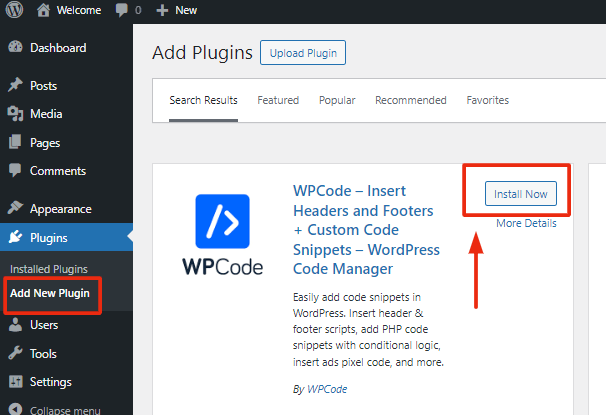Encountering the “The Link You Followed Has Expired” error in WordPress can be a frustrating experience, especially if you’re trying to upload or update files. This error typically appears during file uploads or when changing settings that require large data processing. It’s a common issue faced by many WordPress users, but fortunately, there are several effective methods to resolve it.
In this tutorial, we’ll walk you through the potential causes and solutions for this error. Whether you’re a beginner or an experienced WordPress user, this guide will help you troubleshoot and fix the issue efficiently, ensuring your site runs smoothly without any hiccups.
- What Causes ‘The Link You Have Followed Has Expired’ Error?
- How to Check Your Maximum File Upload Size in WordPress
- How to Fix “The Link You Followed Has Expired” Error In 7 Ways
- How to Use a Health Check Plugin to Troubleshoot Plugin Conflicts in WordPress
- What to Do If the php.ini File Is Missing on Your Server
- Why Backing Up Your Website is Crucial Before Modifying Core WordPress Files
- More Ways to Troubleshoot WordPress Errors
- Conclusion: Fixing The Link You Followed Has Expired Easily
What Causes ‘The Link You Have Followed Has Expired’ Error?
The “The Link You Followed Has Expired” error typically occurs when a file upload or request exceeds the maximum limits set by your WordPress configuration or server settings. This can happen for several reasons, including:
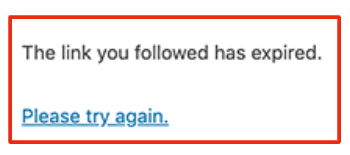
- File size limitations set by your hosting environment.
- Insufficient PHP memory limits.
- Timeouts or restrictions in your server’s configuration.
- Conflicts with plugins or themesA WordPress theme is a set of files that determine the design and layout of a website. It controls everything ... More.
Identifying the root cause is the first step toward resolving the error. And preventing it from recurring. Understanding these limits and how to adjust them is key to resolving the problem.
How to Check Your Maximum File Upload Size in WordPress
If you’re working with WordPress, understanding your website’s maximum file upload size is essential. Knowing this limit helps you ensure that your files can be uploaded without encountering errors. Here’s a simple, step-by-step guide to finding out your upload size limit in WordPress.
Step 1: Log into Your WordPress DashboardIn WordPress, the Dashboard is a central hub for managing a website's content and settings. It is the first sc... More
Start by accessing your WordPress admin panel. Simply enter your credentials and log in.
Step 2: Go to the Media Section

Once you’re logged in, navigate to the Media menuIn WordPress, a menu is a collection of links that are displayed as a navigation menu on a website. Menus are ... More on the left-hand sidebar. From there, click on Add New to access the file upload interface.
Step 3: Check the Maximum Upload File Size
In the Upload New Media window, look for the file upload area. You’ll see a note or message near this section that specifies your website’s current maximum file size limit. It may read something like, “Maximum upload file size: 2 MB.”
What to Do If the Limit Is Too Low
If the maximum file size is too restrictive for your needs, don’t worry. You can increase the limit by:
- Contacting your hosting provider to request a higher file upload limit.
- Modifying your site’s code through the php.ini file, .htaccess, or wp-config.php.
Why Knowing Your File Upload Limit Matters
Being aware of your file size limit ensures a seamless upload process for media files like images, videos, or plugins. It also helps you avoid frustrating upload errors that could disrupt your workflow.
By following this guide, you’ll know exactly how to check your WordPress file upload size and take the necessary steps to adjust it if needed.
How to Fix “The Link You Followed Has Expired” Error In 7 Ways
When you encounter the “The Link You Followed Has Expired” error in WordPress, it often indicates that your PHP configuration settings are limiting the file upload size or script execution time. Adjusting these settings can help resolve the issue. Below are several methods to fix this error by tweaking your PHP settings.
1: Increase Limits Using WPCode (Recommended)
- Install WPCode PluginA plugin is a software component that adds specific features and functionality to your WordPress website. Esse... More: Go to your WordPress dashboard, navigate to Plugins > Add New, and search for “WPCode.” Install and activate the plugin.
- Add Custom Code: Once activated, go to WPCode > Add Snippet. Choose “Add Custom PHP Code” and enter the following code to increase the upload limits:
@ini_set('upload_max_size', '64M');
@ini_set('post_max_size', '64M');
@ini_set('max_execution_time', '300');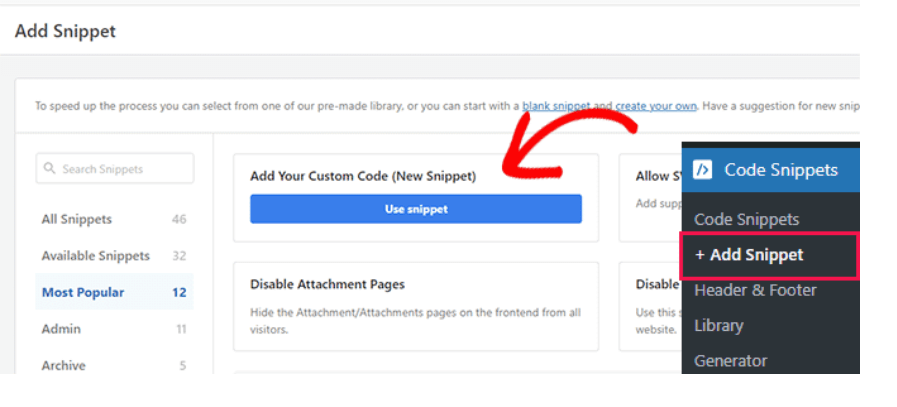
- Save Changes: Click “Save” and test your upload or changes again.
2: Increase PHP Memory Limit in wp-config.php
- Access wp-config.php: Use an FTP client or your hosting file manager to access your WordPress root directory.
- Edit the File: Open
wp-config.phpand add the following line before the/* That's all, stop editing! */line:
define('WP_MEMORY_LIMIT', '64M');- Save and Upload: Save the file and re-upload it if necessary. Check if the error is resolved.
3: Increase Limits in the .htaccess File
- Access .htaccess File: Locate and edit the
.htaccessfile in your WordPress root directory via FTP or file manager. - Add Code: Insert the following code at the end of the file:
php_value upload_max_filesize 64M
php_value post_max_size 64M
php_value max_execution_time 300- Save Changes: Save the file and refresh your WordPress site to see if the issue persists.
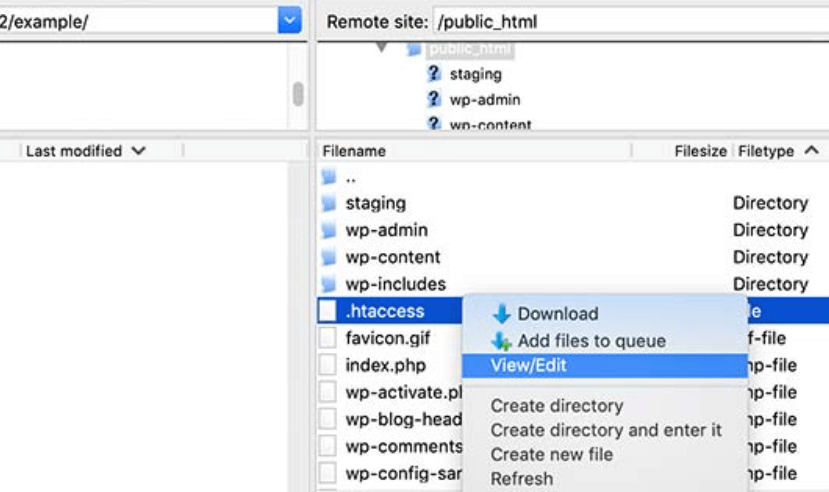
4: Increase Limits in the php.ini File
- Locate php.ini File: If your hosting provider allows access to
php.ini, locate it via your hosting control panel or FTP. - Edit File: Open
php.iniand adjust the following settings:
upload_max_filesize = 64M
post_max_size = 64M
max_execution_time = 300- Save and Restart: Save changes and restart your web server if required. Verify if the error is resolved.
5: Update Your PHP Version
- Check PHP Version: Go to your hosting control panel and check the current PHP version.
- Update PHP: If it’s outdated, update to the latest stable version. Many hosting providers offer an option to change PHP versions from their control panel.
- Test Changes: After updating, check if the error has been fixed.
6: Check for Plugin Conflicts
- Deactivate Plugins: Deactivate all your plugins and attempt the same action that triggered the error.
- Reactivate Plugins: If the error disappears, reactivate plugins one by one to identify the culprit.
- Resolve Conflict: Once identified, consider updating or replacing the problematic plugin.
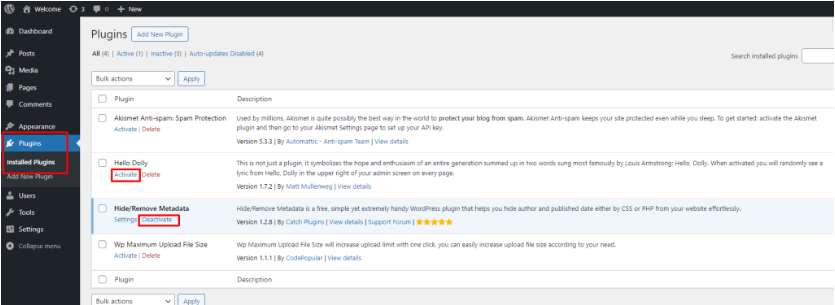
7: Contact Your Hosting Provider
- Reach Out: If none of the above methods work, contact your hosting provider’s support team.
- Provide Details: Explain the issue and the steps you’ve already taken. They may adjust server settings or provide additional assistance.

How to Use a Health Check Plugin to Troubleshoot Plugin Conflicts in WordPress
Struggling with persistent errors on your WordPress site? Suspecting a plugin might be the troublemaker? A health check and troubleshooting plugin can be your go-to solution for identifying. And resolving conflicts—without risking your live site’s functionality. Here’s a step-by-step guide to using this powerful tool effectively.
Step-by-Step Guide to Using a Health Check Plugin
1. Install a Health Check Plugin First, install a reliable health check and troubleshooting plugin. Such as the Health Check & Troubleshooting Plugin. This tool operates in a controlled environment. Ensuring it won’t disrupt your live site during diagnostics.
2. Activate Troubleshooting Mode
- Log into your WordPress admin dashboard.
- Navigate to Tools → Site Health → Troubleshooting.
- Click Enable Troubleshooting Mode.
Once activated, troubleshooting mode temporarily disables all plugins. And reverts your website to a default theme. This creates a clean slate for identifying potential conflicts.
3. Test Plugins for Conflicts
- Begin reactivating your plugins one at a time.
- After enabling each plugin, check your site to see if the error reoccurs.
- Continue this process until you identify the plugin responsible for the issue.
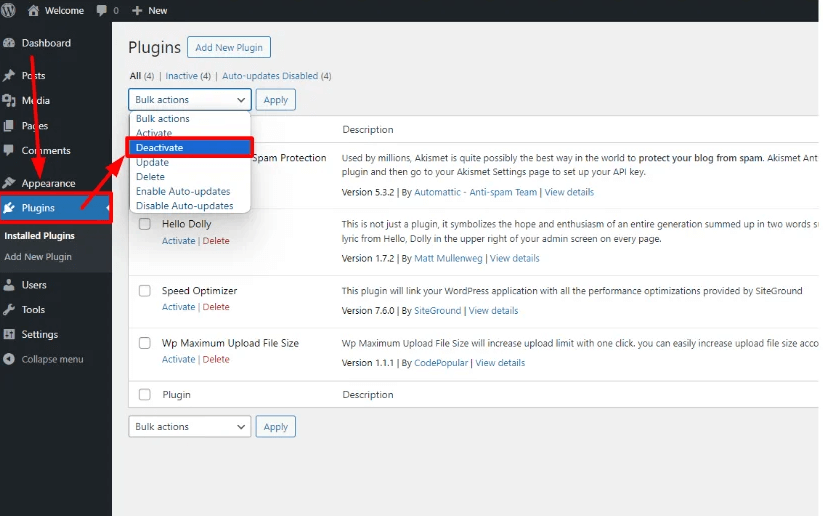
4. Replace or Remove the Problematic Plugin Once you’ve found the conflicting plugin, deactivate it permanently. Look for a compatible alternative that serves the same purpose without causing issues on your site.
Why Use Troubleshooting Mode for WordPress Plugin Conflicts?
1. Safe, Non-Intrusive Testing Troubleshooting mode operates in isolation. Ensuring your live site remains unaffected during diagnostics.
2. Pinpoints Issues Quickly By systematically testing plugins. This method helps you identify the root cause of errors.
3. Simple Recovery Process After resolving the issue, you can easily deactivate troubleshooting mode. And reactivate all necessary plugins with minimal downtime.

Using a health check plugin is one of the most efficient ways to resolve WordPress plugin conflicts while maintaining a smooth user experience. By following this guide, you can protect your website’s functionality. And ensure seamless performance for your visitors.
Pro Tip: Optimize your WordPress site’s health regularly. It is crucial to prevent errors caused by outdated or incompatible plugins.
What to Do If the php.ini File Is Missing on Your Server
If you find that the php.ini file is not present on your server, follow these straightforward steps to create and configure one:
- Create the File:
- Open a simple text editor, such as Notepad or TextEdit.
- Insert Configuration Settings:
- Add the following lines of code to the blank document to set your desired PHP configuration:
upload_max_filesize = 138M post_max_size = 138M max_execution_time = 3003. Save the File:
- Save the document with the name php.ini.
4. Upload the File:
- Use an FTP client, such as FileZilla, to upload the php.ini file to the root directory of your website or the directory where it will be most effective for your application.
5. Verify the Changes:
- Confirm that the settings have taken effect by running a PHP info file or checking the configuration through your web hosting control panel.
By following these steps, you ensure that your web server is configured to handle larger file uploads and maintain efficient operation times.
How to Adjust Upload Limits in Your functions.php File
If you’re looking to modify the upload limits on your website, you’ll need to tweak some settings in the functions.php file. Here’s what you need to do:
Add this snippet to your functions.php file:
@ini_set( 'upload_max_size' , '130M' );
@ini_set( 'post_max_size', '130M' );
@ini_set( 'max_execution_time', '300' );
Explanation of Parameters:
- upload_max_size: Limits the maximum file size for uploads. Adjust this value based on the file sizes you expect to handle.
- post_max_size: Sets the ceiling for all content in a single postA post is a type of content in WordPress, a popular open-source content management system used for creating an... More, including text and media files.
- max_execution_time: Defines how long a script is allowed to run before being halted. This is crucial to avoid timeouts during uploads.
Feel free to modify the sizes and time according to your needs. This configuration gives you flexibility, ensuring smooth uploads without interruptions.
Why Backing Up Your Website is Crucial Before Modifying Core WordPress Files
Updating core WordPress files can enhance your website’s functionality and security. However, it also poses risks that can lead to data loss or site malfunction if something goes awry. That’s why creating a backup of your website is essential before making any significant changes.
Protect Against Data Loss
- Unpredictable Issues: Modifying core files can sometimes cause unexpected problems such as crashes or data corruption. A backup ensures that you have a secure fallback if anything goes wrong.
Preserve Customizations
- Safeguard Unique Elements: Your website may have specific themes or plugins that contribute to its personalized look and functionality. A backup preserves these customizations, preventing loss of unique features.
Ease of Restoration
- Quick Recovery: In the event of an error, a backup allows for a rapid restoration process. This minimizes downtime and maintains your audience’s access to your content.
Prepares for Compatibility Issues
- Assess Plugin and Theme Compatibility: Backups allow you to test updates safely. If new updates conflict with existing plugins or themes, you can quickly revert to the previous version.
Steps to Back Up Your Website
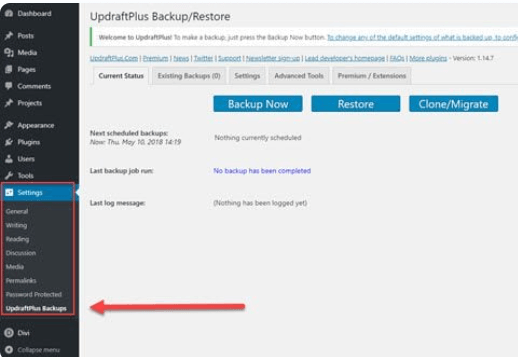
- Select a Reliable Backup Plugin: Consider plugins like UpdraftPlus or BackupBuddy to streamline the process.
- Store Backups Securely: Use cloud storage solutions such as Google Drive or Dropbox to keep your backups safe and accessible.
- Regular Backups: Develop a routine backup schedule to ensure your data is always protected.
By backing up your website before altering core files, you not only secure your data but also provide peace of mind. This practice prepares you for any issues that may arise and helps maintain the integrity of your site.
More Ways to Troubleshoot WordPress Errors
If you encounter other issues or need further assistance, consider checking out WordPress forums, knowledge bases, or consulting with a WordPress professional. Regular maintenance and updates are crucial for preventing similar errors. Need to fix other WordPress errors? Explore these helpful guides:
How to Fix Pluggable.php File Errors in WordPress: A Step-by-Step Guide
How to Fix White Text and Missing Buttons in WordPress Visual Editor
How to Fix “Missing a Temporary Folder” Error in WordPress
How to Fix File and Folder Permissions Error in WordPress
How to Fix Common SSL Issues in WordPress
Conclusion: Fixing The Link You Followed Has Expired Easily
Fixing the “The Link You Followed Has Expired” error is essential for maintaining a smooth and functional WordPress site. By following the methods outlined above, you can address the issue effectively and prevent it from recurring. Each solution targets different aspects of server and WordPress configuration, ensuring you have multiple options to resolve the problem.
Remember, keeping your WordPress site updated and monitoring server settings can help you avoid such issues in the future. If you’re still having trouble, don’t hesitate to seek help from your hosting provider or a WordPress expert.
In summary, while the “The Link You Followed Has Expired” error can disrupt your workflow. It is manageable with the right approach. By following the steps outlined in this article and adopting preventive practices. You can ensure a smoother, more reliable WordPress experience.
Struggling with the “The Link You Followed Has Expired” error in WordPress? For fast WordPress hosting and hassle-free updates that ensure smooth performance, explore our hosting packages by clicking the button below:


